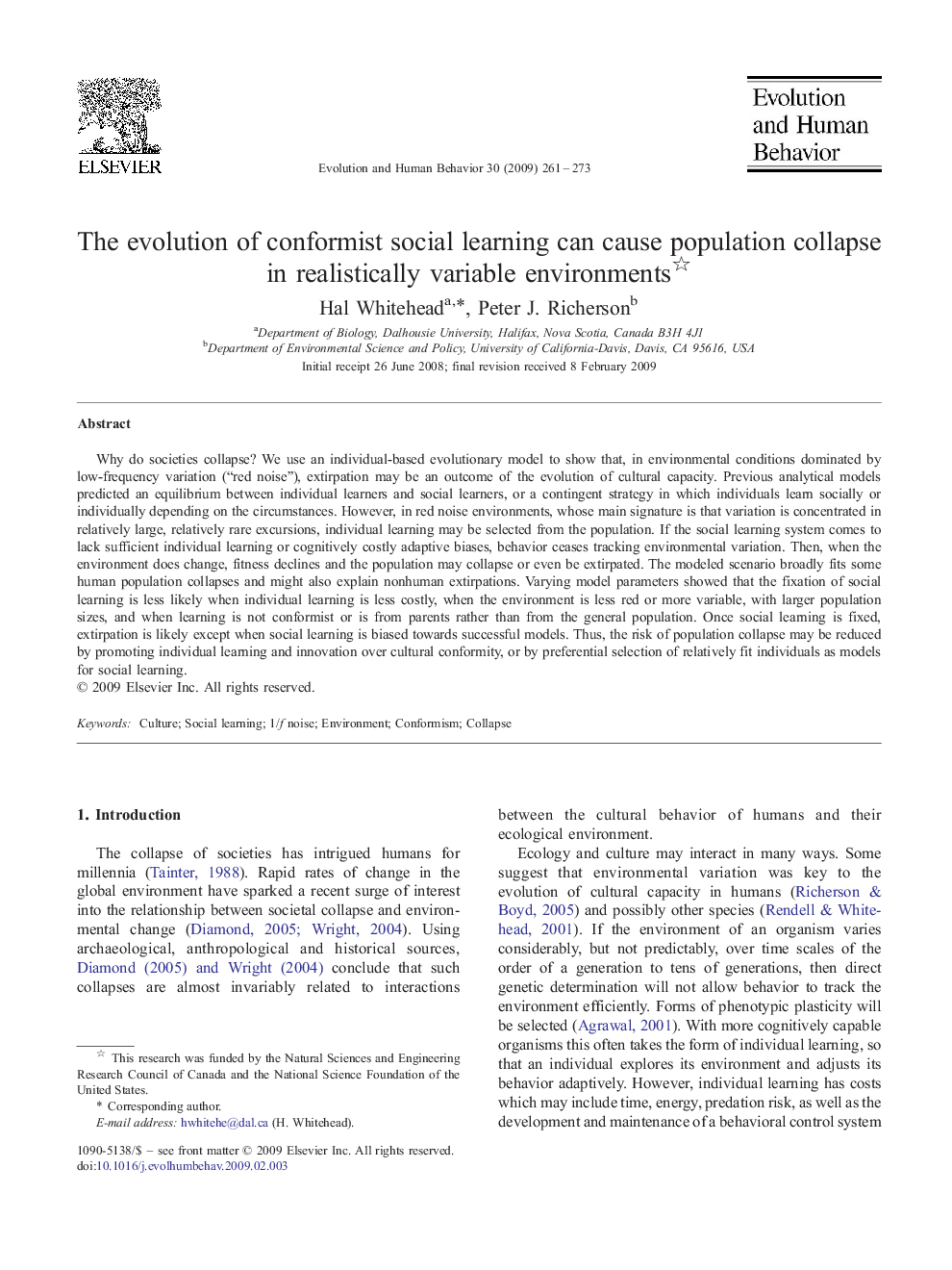| کد مقاله | کد نشریه | سال انتشار | مقاله انگلیسی | نسخه تمام متن |
|---|---|---|---|---|
| 943427 | 925468 | 2009 | 13 صفحه PDF | دانلود رایگان |

Why do societies collapse? We use an individual-based evolutionary model to show that, in environmental conditions dominated by low-frequency variation (“red noise”), extirpation may be an outcome of the evolution of cultural capacity. Previous analytical models predicted an equilibrium between individual learners and social learners, or a contingent strategy in which individuals learn socially or individually depending on the circumstances. However, in red noise environments, whose main signature is that variation is concentrated in relatively large, relatively rare excursions, individual learning may be selected from the population. If the social learning system comes to lack sufficient individual learning or cognitively costly adaptive biases, behavior ceases tracking environmental variation. Then, when the environment does change, fitness declines and the population may collapse or even be extirpated. The modeled scenario broadly fits some human population collapses and might also explain nonhuman extirpations. Varying model parameters showed that the fixation of social learning is less likely when individual learning is less costly, when the environment is less red or more variable, with larger population sizes, and when learning is not conformist or is from parents rather than from the general population. Once social learning is fixed, extirpation is likely except when social learning is biased towards successful models. Thus, the risk of population collapse may be reduced by promoting individual learning and innovation over cultural conformity, or by preferential selection of relatively fit individuals as models for social learning.
Journal: Evolution and Human Behavior - Volume 30, Issue 4, July 2009, Pages 261–273